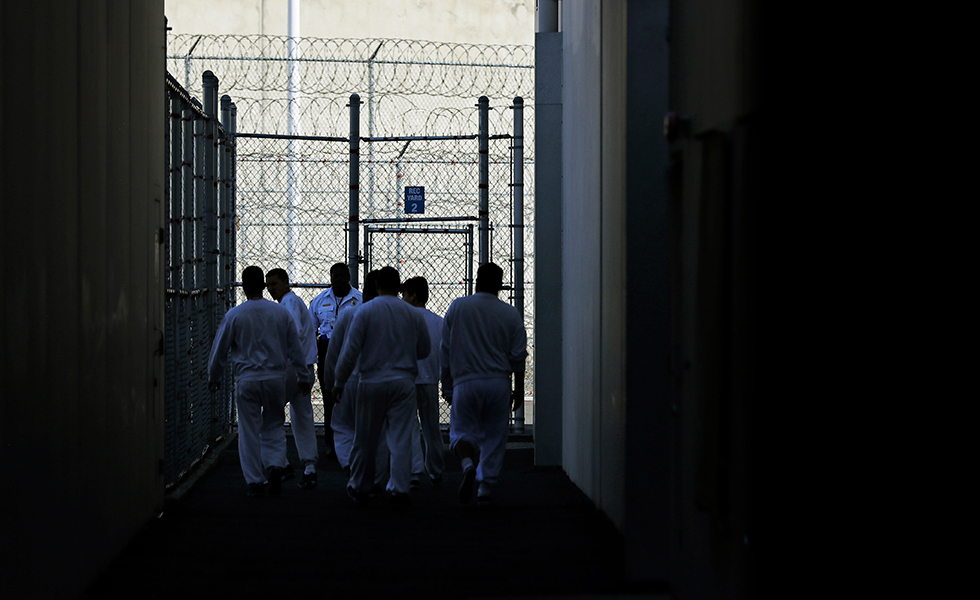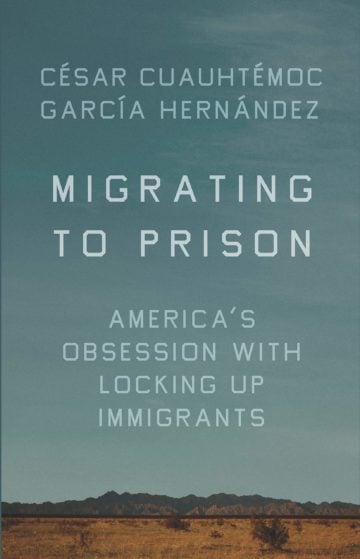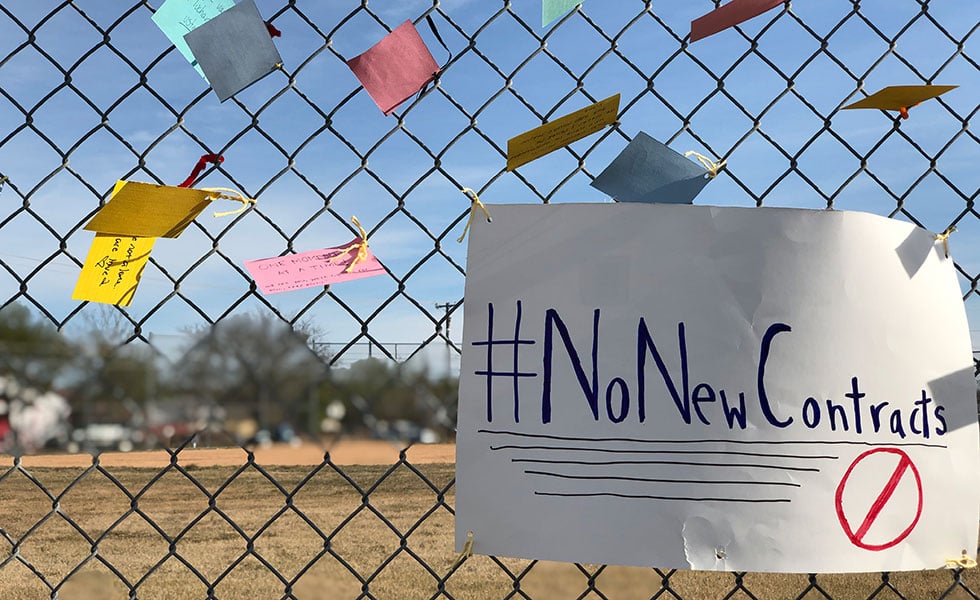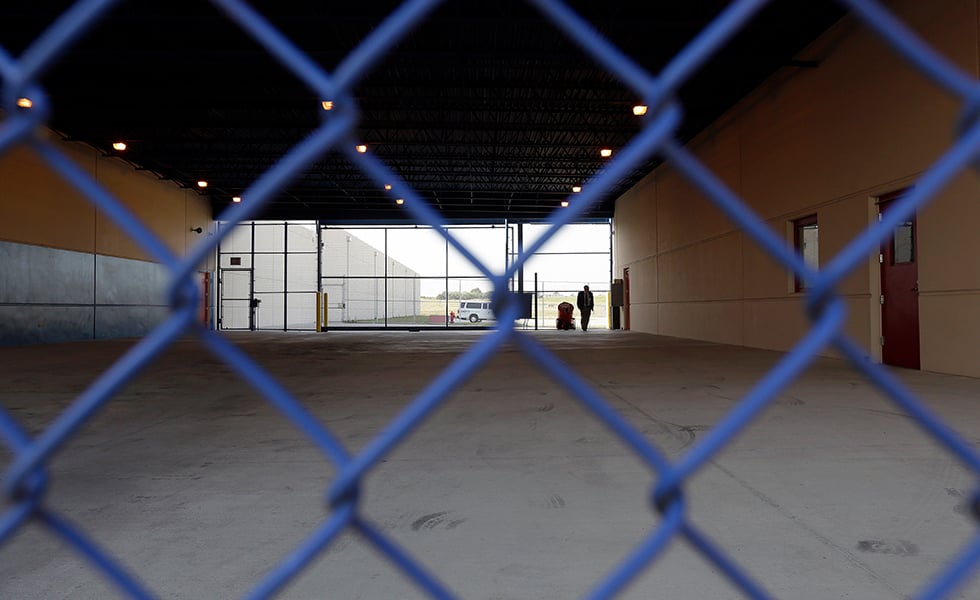
A World Without Immigrant Prisons
Law professor and author César Cuauhtémoc García Hernández wants you to believe it’s possible.

“I imagine a future that looks more like United States history than United States present. I imagine a future in which immigration prisons do not exist.”
Those provocative lines come from the conclusion of Migrating to Prison: America’s Obsession with Locking up Immigrants, a new 200-page plea for Americans to rethink our base assumptions about migration and incarceration. Released December 3, the book is the second title from University of Denver law professor and longtime blogger César Cuauhtémoc García Hernández. The author’s timing is apt, as President Donald Trump’s xenophobia-laced first term draws to a close and Democrats debate the priorities of a possible new administration in 2021.
García Hernández, a Rio Grande Valley native, suggests that to understand how we might transform our current immigrant detention regime—a sprawling system that incarcerates some 46,000 migrants as I write this—we must step back about 130 years. Though it may boggle the modern mind, America operated without immigrant detention during its first century of independent governance. It was only in the late 1890s that shipping companies began holding migrant passengers in squalid dockside warehouses so that the government could parse the worthy from the unworthy.

by César Cuauhtémoc García Hernández
The New Press
$24.99; 208 pages
Buy the book here.
Immigrant prisons became entrenched along the coasts in the following decades, but, in a little-remembered turn of history, the Eisenhower administration curtailed the system to a near-vanishing point. As the government closed its last remaining long-term facility in 1954, then-Attorney General Herbert Brownell called the move part of the “humane administration of the immigration laws.”
“In fact if not in law, the United States came remarkably close to abolishing immigration imprisonment,” García Hernández writes of the period between the mid-1950s and the Reagan administration.
That history is key to the author’s core thesis that migrant prisons are both historically contingent and entirely unnecessary. If we wanted, newly arrived migrants and others facing potential deportation could be allowed to live freely with their families or in nonprofit shelters. It’s been the case and could be again. But dismantling the detention system will require battling a nasty tangle of entrenched economic interests, racism, and uncreative thinking.
The rise of immigrant detention, García Hernández observes, mirrors that of mass incarceration more broadly. The twin systems developed in tandem—through a series of bipartisan crackdowns launched by Reagan and only deepened by Bill Clinton—and both, he argues, are equally shot through with racial prejudice. Immigrant detention is part of a “system designed to keep migrants in their place at the bottom of a social hierarchy that metes out favors and punishments according to race and class,” the author writes.
The lines also blur between the immigration and criminal justice systems—a topic García Hernández has written on for a decade at his blog, Crimmigration. Immigrants are often fed into the deportation pipeline through minor scrapes with the law such as drug charges or traffic violations, and thanks to biased policing, that burden falls heaviest on migrants of color. Black immigrants, García Hernández notes, are the most likely to wind up in deportation proceedings due to criminal trouble. “Immigration law piles on top of criminal law, becoming a second layer of racially biased punishment,” he writes.
Often, García Hernández bolsters his points with his own life experiences. He recalls growing up in the Valley, a criminalized region where cops and Border Patrol swarm. When he left to attend Brown University, the consequence-light existence of his classmates shocked him: “During my first week in the Ivy League, I saw more crime than I ever had before.”
Dismantling the detention system will require battling a nasty tangle of entrenched economic interests, racism, and uncreative thinking.
The book’s weakness lies in its middle passages, which devolve at times into a blow-by-blow of recent immigration policy that is both too familiar to educate experts and too in-the-weeds to hook the uninitiated. The prose is not strong enough to cover for these shaky stretches. The book’s strength arises when García Hernández makes the reader rethink immigrant detention altogether, such as when he calls the system a “jobs program” for economically impoverished counties.
In the third section, “Abolishing Immigration Prisons,” one gets the sense the book should have been titled “Is Immigrant Detention Obsolete?” in homage to the Angela Davis classic that the author cites repeatedly. Making a radical case for abolition, García Hernández even questions the value of reforms that improve detention center conditions. “Making immigration prisons nicer may drive migrants’ confinement further into the United States’ legal system,” he writes, adding that his fellow immigration lawyers who fight detention through litigation may wind up enshrining the very system they decry.
Given the skepticism of incremental reforms, the book would have benefited from more time spent mapping the path to abolition and detailing an alternative system. Still, the author does suggest some steps forward. Certain reforms, he argues, move the system toward abolition, such as decoupling immigration enforcement from ordinary policing and providing migrants in removal proceedings with the right to legal counsel. Past pilot programs, he notes, have suggested that case management and a lawyer are enough to get released migrants to comply with court dates.
Today, such ideas seem radical because Trump has narrowed our field of vision, sending both journalists and activists scrambling after never-ending fires—and, crucially, because President Obama never radically rethought immigration enforcement either. That’s where García Hernández comes in. He argues compellingly that immigrant advocates shouldn’t content themselves with debates about how many thousands of immigrants to lock up, or other minor tweaks. “Instead, we should dream,” he writes.
Read more from the Observer:
-
As Port Neches Plant Smolders, Trump Rolls Back Safety Rules for Chemical Plants: After a deadly explosion in the town of West in 2013, Obama implemented stricter safety rules for chemical plants. Trump’s EPA has just undone them.
-
Why I Started a Book Club in the Harris County Jail: Education programs make jails safer and reduce rates of recidivism when people reenter society.
-
Joe Barton Resurfaces with a Blueprint for How to Bail Out the Oil Industry and Worsen Climate Change: As the former Texas congressman prepares to get into the lobbying game, the climate-change denier reflects on how he worked with industry to unleash a runaway drilling boom in the Permian Basin.


